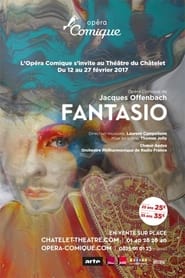detail profile alix le saux

Info Pribadi
Peran Yang Di Mainkan Alix Le Saux
 Don Giovanni was commissioned by the...
Don Giovanni was commissioned by the...Don Giovanni 2023
Don Giovanni was commissioned by the Prague Opera immediately after the success of The Marriage of Figaro: Mozart and Da Ponte wanted to build on their success and chose a subject that had triumphed just a few weeks earlier in Venice, a Don Giovanni composed by Giuseppe Gazzaniga. Revisiting the theme of the Seville Cheat – a prevalent subject in theatre since the mid-17th century, especially through Molière’s powerful incarnation, and in a ballet by Gluck in Vienna in 1761 – Da Ponte focused the work on the libertine character of Don Juan, no doubt drawing inspiration from his friend Casanova (who in fact helped make changes to Act 2, Scene 9, and attended the Prague première).
 Le Nozze di Figaro marked the...
Le Nozze di Figaro marked the...Le Nozze di Figaro 2023
Le Nozze di Figaro marked the beginning of Mozart’s collaboration with Da Ponte. At the premiere in 1786, the success was mixed in Vienna, but Prague was enthusiastic about this love imbroglio set in Seville, where the Countess and Suzanna play cat and mouse with the gentlemen, to avoid the Count’s designs on his maids… Figaro undertakes to set this little world to rights, to confound his Master while preserving the Countess’s affair with Cherubino. An infernal machine launched at full speed, which allows Mozart to produce arias of great beauty, an exceptionally determined Figaro, and reversals of situation which are the subject of brilliant ensemble numbers at the end of each act. Exhilarating!

